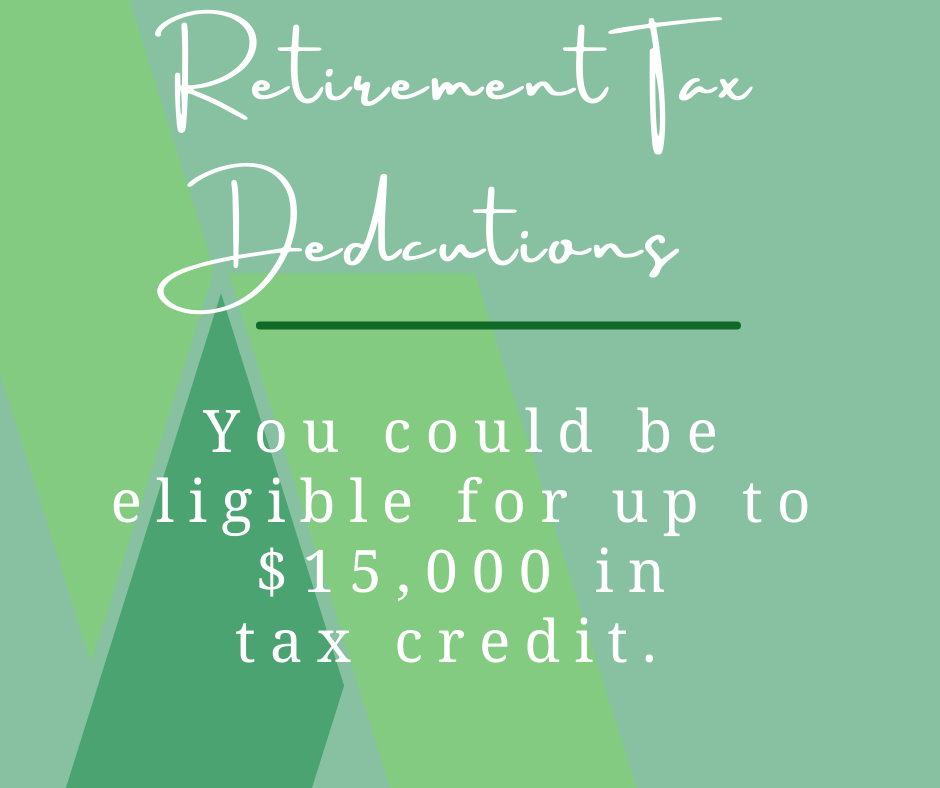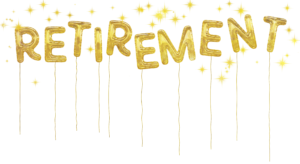Retirement and Tax credit you can take advantage of!
Year-End Retirement Deductions
The clock continues to tick. Your retirement is one year closer. For those of you like me, that don’t want retiring early and living a life of luxury to be just a pipe dream.
Here are some tips to take into consideration as this tax year closes.
Take a few minutes to review the four retirement plan tax-reduction strategies in this article.
You might find several thousand dollars (and maybe much more) in your pocket by taking the actions in this article. But you’ll need to act now to get the cash.
The Grand Scheme
Here are four opportunities you can take advantage of:
- Establish a 2021 retirement plan before December 31. This way you can make both an employee and an employer contribution. This is possible even if you are the sole owner/worker in a proprietorship or a corporation.
- Claim up to $15,000 in tax credits by having your business create a retirement plan that covers you and your employees.
- Claim up to $1,500 in tax credits by enabling the automatic contribution.
- Convert to a Roth IRA.
Establish Your 2021 Retirement Plan
First, a question: Do you have your (or your corporation’s) retirement plan in place?
If not, and if you have some cash you can put into a retirement plan, get busy and put that retirement plan in place so you can obtain a tax deduction for 2021.
For most defined contribution plans, such as 401(k) plans, you (the owner-employee) are both an employee and the employer.
This is good for you because you can make both the employer and the employee contributions, allowing you to put a good chunk of money away. (woo hoo! Who doesn’t like the sound of that!
In general, your plan document will define when you can make employee or employer contributions that will produce 2021 tax deductions.
Make sure you know exactly when you can make both
- your employer contributions,
- your employee contributions.
 Claim the New, Improved Retirement Plan Start-Up Tax Credit of Up to $15,000
Claim the New, Improved Retirement Plan Start-Up Tax Credit of Up to $15,000
Two questions:
- Are you the sole worker in your business?
- Is your retirement plan in place as you read this?
If the answer is no to both these question,, consider this: by establishing a new qualified retirement plan (such as a profit-sharing plan, 401(k) plan, or defined benefit pension plan), a SIMPLE IRA plan, or a SEP, you can qualify for a non-refundable tax credit that’s the greater of
- $500 or the lesser of (a) $250 multiplied by the number of your non-highly compensated employees who are eligible, or (b) $5,000.
- The credit is based on your “qualified start-up costs,” which means any ordinary and necessary expenses of an eligible employer that are paid or incurred in connection with
- the establishment or administration of an eligible employer plan,
- the retirement-related education of employees with respect to such plan.
- The credit applies to the year of start-up and for the next two years (capped at $5,000 a year, or $15,000 maximum).
- You may deduct any costs in excess of the tax credit as ordinary and necessary expenses.
- As an employer you are eligible for the credit if, for the preceding year,
- you had no more than 100 employees, each with compensation of $5,000 or more,
- your plan has at least one employee eligible to participate who is not a highly compensated employee.
The solo business operator with no employees is not eligible for the small business retirement plan start-up credit. (sorry!)
Claim the New Automatic Enrollment $500 Tax Credit for Each of Three Years ($1,500 Total)
The SECURE Act added a non-refundable credit of $500 per year for up to three years, beginning with the first taxable year (2020 or later) in which you, as an eligible small employer, include an automatic contribution arrangement in a 401(k) or SIMPLE IRA plan.
The new $500 auto-contribution tax credit is in addition to the start-up credit and can apply to both newly created and existing retirement plans. (Hello! Double credit Yes please!)
The great part of this is you don’t have to spend any money to trigger the credit. You simply need to add the auto-enrollment feature.
As with the start-up credit above, you are an employer eligible for the credit if, for the preceding year at the same requirements as stated above.
The solo business operator with no employees is not eligible for the automatic enrollment credit. (Sorry again, this doesn’t seem fair but life rarely is.)
Convert to a Roth IRA
Consider converting your 401(k) or traditional IRA to a Roth IRA.
Are you making good money on your IRA investments? And you won’t need your IRA money during the next five years? Clincher I know who has that kind of crystal ball?
That being said, the Roth IRA over its lifetime can produce better results to the traditional retirement plan.
First another question, (know so many questions): How much tax will you have to pay now to convert your existing plan to a Roth IRA?
With the answer to this, you know how much cash you need on hand to pay those taxes.
Here are four reasons you should consider converting your retirement plan to a Roth IRA:
- You can withdraw the monies you put into your Roth IRA (the contributions) at any time, both tax free and penalty-free, because you invested previously taxed money into the Roth account.
- You can withdraw the money you converted from the traditional plan to the Roth IRA at any time, tax-free.
- Here is the 5 year clincher- if you withdraw within those first 5 years you pay a 10% penalty.
- When you have your money in a Roth IRA, you pay no tax on qualified withdrawals (earnings), which are distributions taken after age 59 1/2, provided you’ve had your Roth IRA open for at least five years.
- Unlike with the traditional IRA, you don’t have to receive required minimum distributions (RMDs) from a Roth IRA when you reach age 72—or to put this another way, you can keep your Roth IRA intact and earn money until you die.
Here are four reasons keeping your money in a traditional retirement plan or IRA (versus the Roth IRA) can cost you:
- You’ll generally pay tax and a 10 percent penalty on withdrawals before age 59 1/2.
- You could owe big taxes when you withdraw your money from your traditional IRA.
- Before the SECURE Act, you had to start taking RMDs at 70 1/2. Now you can wait until you turn 72.
- If you die and leave a traditional IRA to your heirs, they could owe big taxes on the accumulated monies as they take the money from the inherited IRA.
Make sure you have the cash to pay the tax on the conversion to a Roth IRA. Don’t invade your existing 401(k) or traditional IRA for the cash to pay the taxes. This can trigger a double whammy of paying both income taxes and the 10% penalty.






